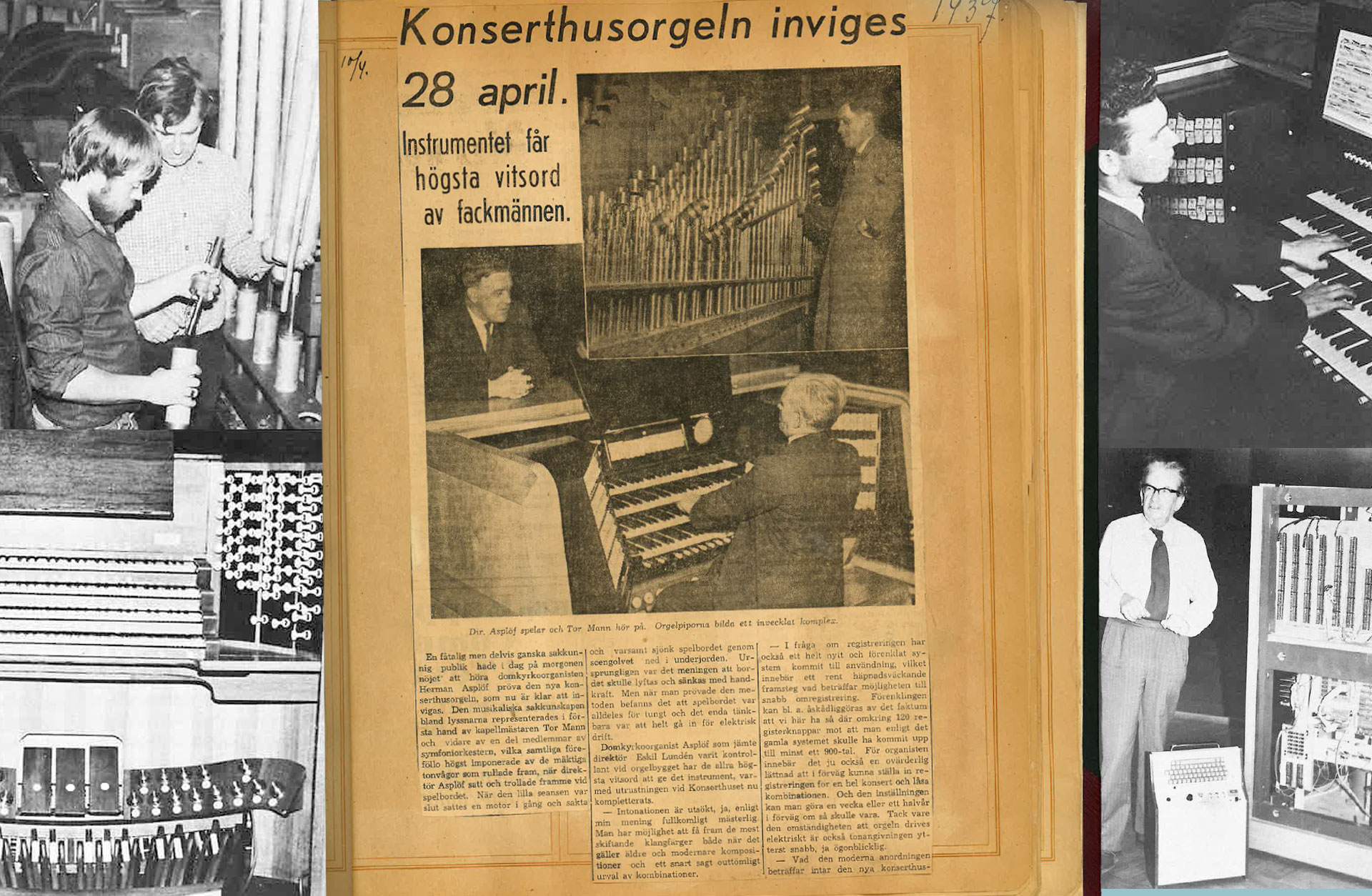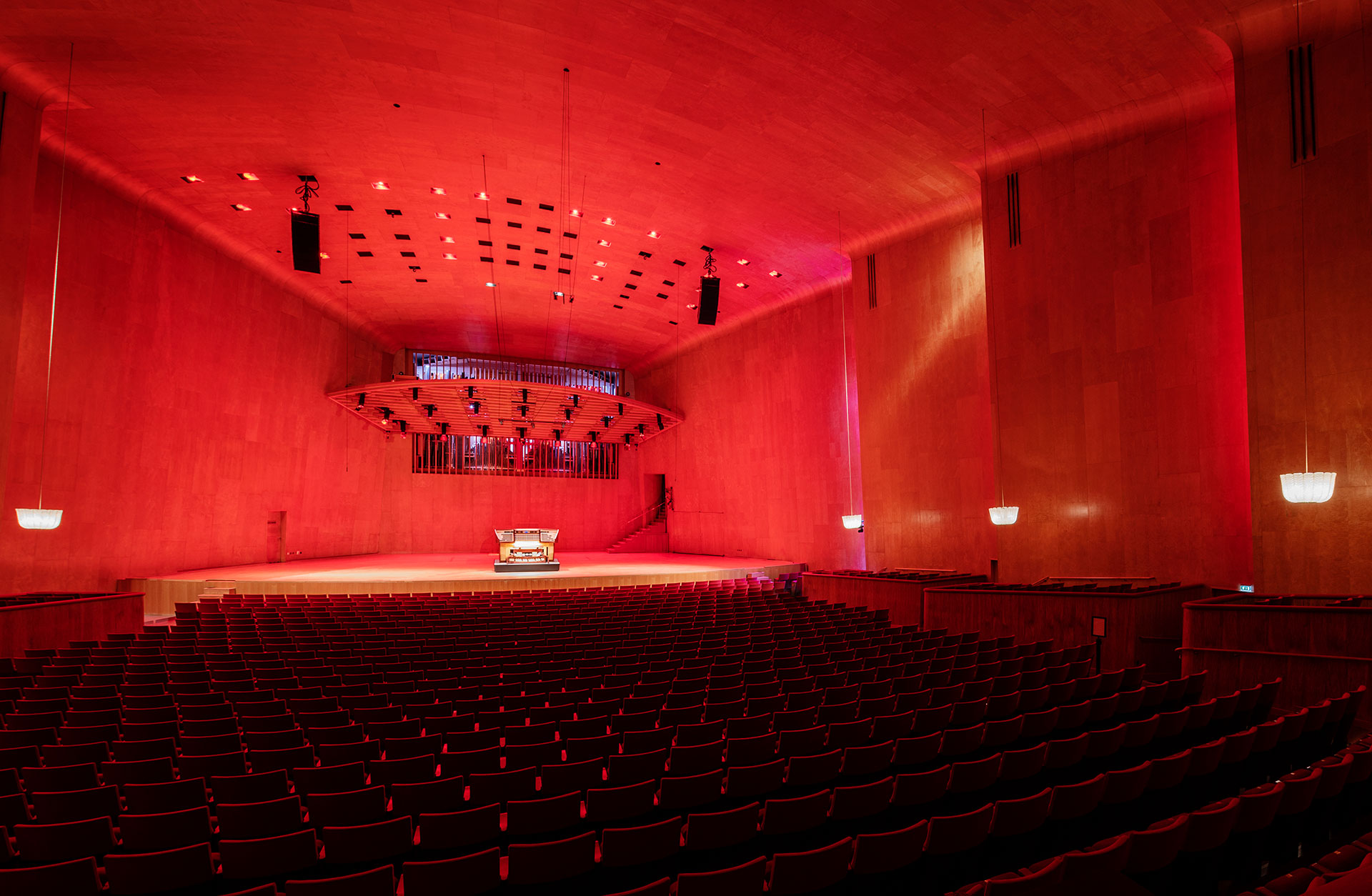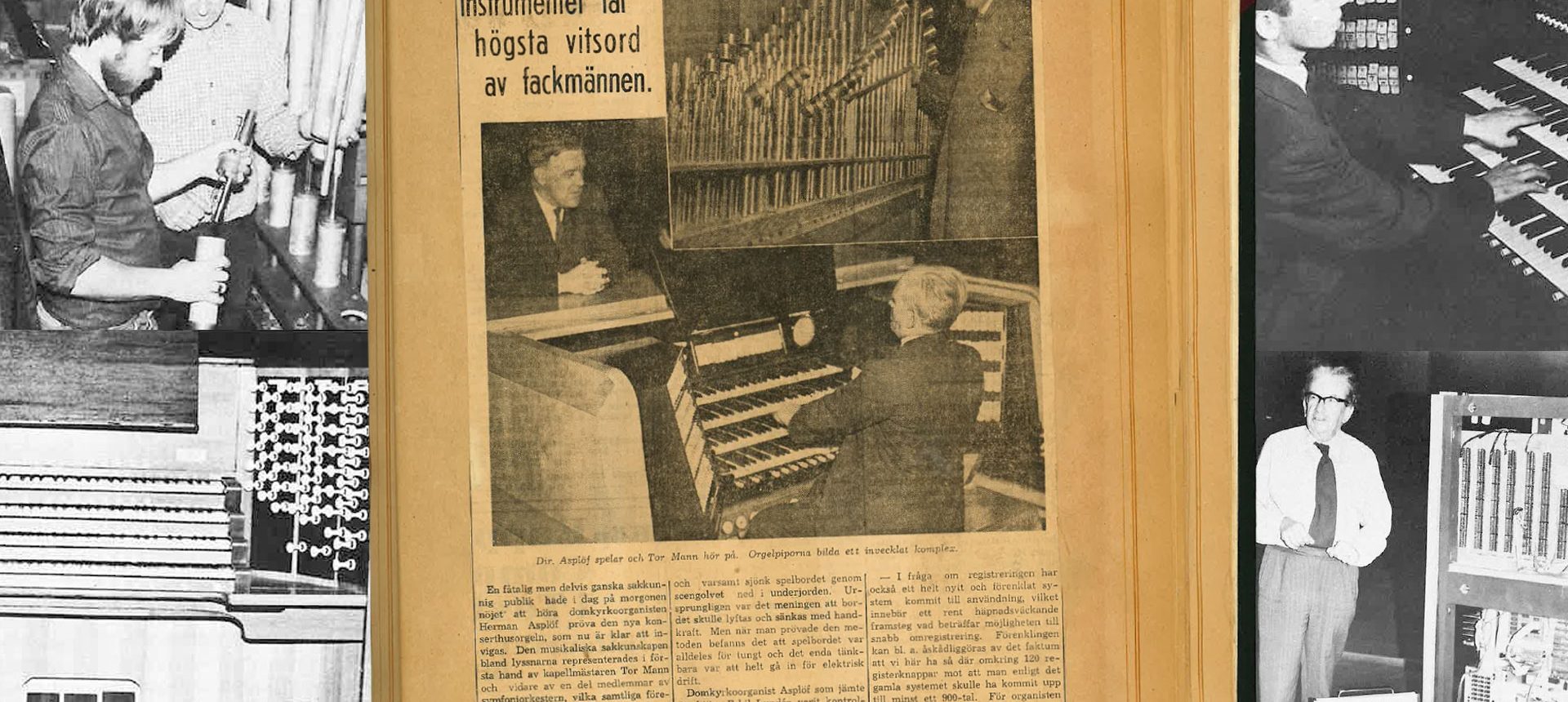Professor Günter Ramin, organist at St. Thomas’ Church in Leipzig, where Johann Sebastian Bach once held the same position, had been invited as a soloist at two concerts. Knut Bäck wrote in Handelstidningen:
“Full register unleashed a powerful, substantial timbre. The pianissimo again possessed a supersensibility that made the audience almost hold their breath. Especially in the program’s first number, Handel’s Organ Concerto No.10. It sounded as from afar in time, as if the organ’s resonating board had captured the remaining, lingering tones from the ether, those the master’s own chubby fingers once sent out into space… Mysteriously beautiful!”

In retrospect, there were several deficiencies in the organ. It was too large for the space available, which dampened the organ’s main work, and the electric keyboard’s transmission system with coupling and combination machinery was obsolete already at the inauguration.
It was also unreliable and incorrectly designed – when playing the upper manuals, the organist lost his balance and had to rely on the keys. A computerised update in 1983 was also not as successful as desired.
All this we can now leave behind us when the new fantastic Concert Hall Organ is in place.

The queen of instruments
The organ is called the “queen of instruments” and for a good reason: no other acoustic instrument is so varied in sound and dynamics, from the weakest, solitary tone to massive chords that make it vibrate in floors and walls. The organ in Gothenburg Concert Hall consists of more than 9000 pipes!
Read more about the new organ
